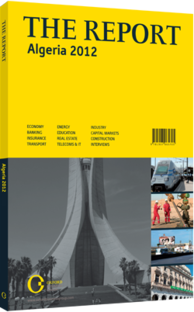Testing the waters: Desalination and improvements to transport infrastructure are key to adequate water supply
As a predominately arid and semi-arid country, Algeria must carefully manage its limited water resources. In the past decade, it has witnessed recurring water shortages due to increasing demand from growing industries and the populace, as well as the effects of drought and pollution. For the past 30 years, Algeria’s rainfall levels have been below average. This is compounded by the issue of distribution, as most of the population is located in the north of the country, along the coast, and most water supplies are located far from the seaboard. Algeria’s future economic development depends as much on water as it does on hydrocarbons.
FOCUS ON DESALINATION: Profits generated from the hydrocarbons industry have been reinvested in developing other resources such as water. Thus, the government has intensified the drilling of wells and the construction of dams while gradually improving water infrastructure. Another main focus is desalination, with plants recently commissioned to supply the 90% of Algeria’s population who live along the 1300-km-long coastline. The International Desalination Association and Global Water Intelligence recently published data indicating that the past five years have seen a 57% increase in the capacity of desalination plants in Algeria. The coastal regions of the Middle East and North Africa region are increasingly turning to desalination to meet their water needs.
Acknowledging the importance of water in the country’s development, the Ministry of Water Resources was created towards the end of 2000. In the new millennium, Algeria’s government has focused on an ambitious public-private partnership (PPP) programme to address possible water shortages and stabilise water supplies for both industry and the population. Launched in 2007, the programme seeks to build 12 desalination plants with a combined output capacity of 2.2bn cu metres of water. Its flagship project, the Maagta facility in Oran, 400 km west of Algiers, is currently the world’s largest membrane-based reverse-osmosis desalination plant. Maagta constitutes one of the first PPP deals in Algeria using the build-operate-transfer model. Built by Singaporean global integrated water solutions provider Hyflux, the plant is designed with a capacity of 500,000 cu metres per day. Hyflux also built the Souk Tleta desalination plant, which produces 200,000 cu metres of water per day.
The Fouka desalination plant, a seawater reverse-osmosis facility, was commissioned in August 2011 and was built for €144m. Located in Tipaza Province, it has a capacity of 120,000 cu metres of water per day and is aimed at serving 500,000 people in the western parts of Algiers. Local commercial bank Credit Populaire d’ Algerie provided 80% of the investment, with the remaining 20% coming from a PPP between Acciona Agua, SNC-Lavalin and the Algerian Energy Company. The joint venture between SNC-Lavalin and Acciona Agua is operating the plant. Two companies owned by the Algerian government, state-owned energy giant Sonatrach and state water company Algérienne Des Eaux, will buy the entire water production of Fouka.
FOREIGN PARTNERS: In July 2012 Algerian representatives met with a delegation from Kuwait to discuss possible collaboration between the two countries on desalination as well as relevant technologies. Algeria mainly uses reverse-osmosis filtering technology, and Kuwait is known to have one of the oldest desalination programmes in the region.
In mid-2012 the EU granted €30m to support Algeria’s water sanitation programme (EAU II). The initiative succeeds EAU I, which was co-funded by the EU with a €20m grant. EAU II seeks to improve national water treatment management and contributes to the implementation of the national water plan.
As part of the 2011-14 national development plan, the Algerian government set aside €9.3bn to develop the water sector in the medium term. According to former minister of water resources Abdelmalek Sellal, per capita water consumption in Algeria has risen from 90 litres in 2000 to 170 litres in 2012 – another reason why boosting supply is a priority for the government.
You have reached the limit of premium articles you can view for free.
Choose from the options below to purchase print or digital editions of our Reports. You can also purchase a website subscription giving you unlimited access to all of our Reports online for 12 months.
If you have already purchased this Report or have a website subscription, please login to continue.

